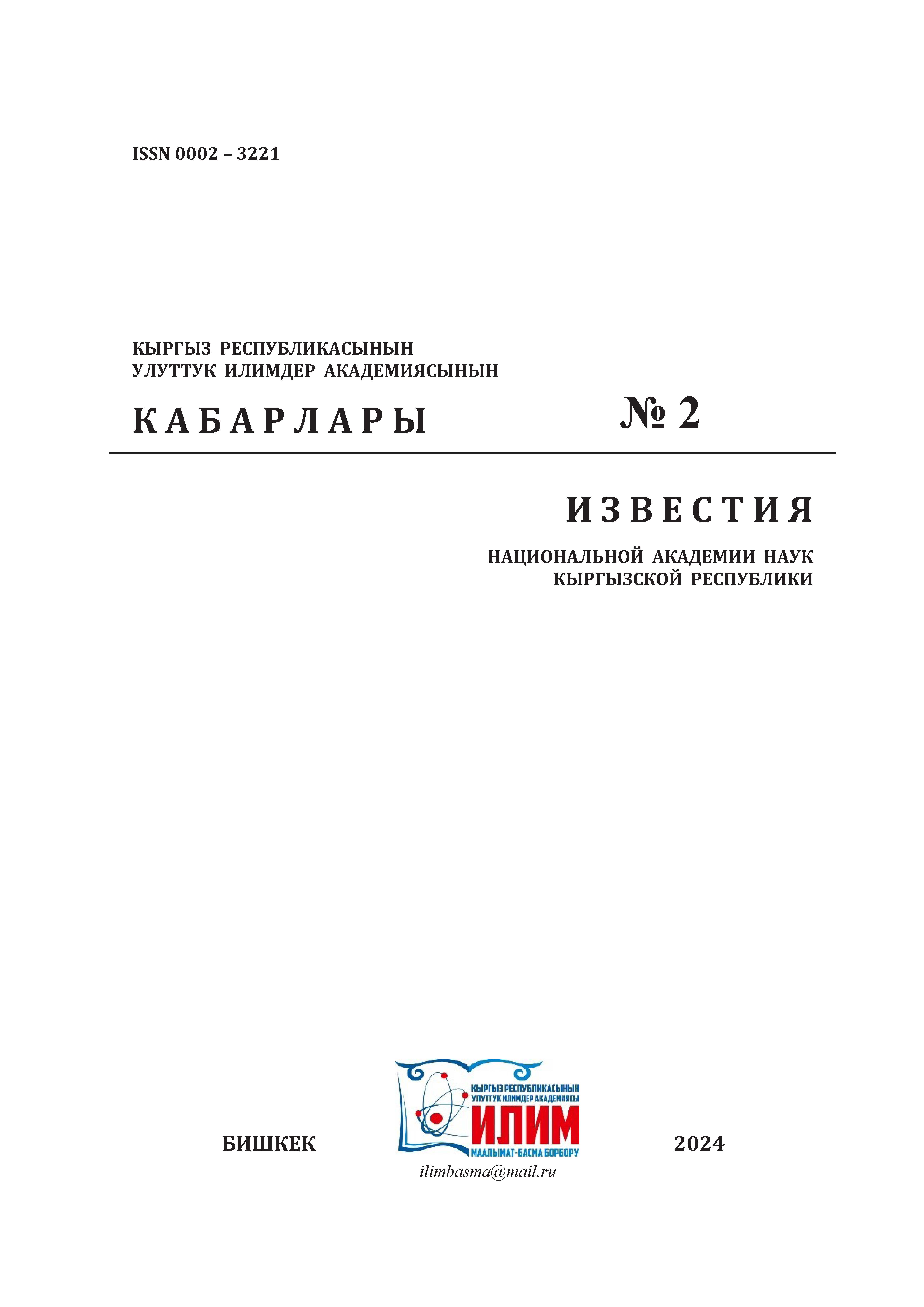INTERPRETATION OF THE WRITTEN MONUMENT OF “YDYRYS PAYGAMBAR”
Keywords:
Qarakhanid era, mausoleum of “Ydyrys Paygambar”, written monument, Central Asia, hacib, Mahmud KashgariAbstract
The spread of Islam in modern Kyrgyzstan and neighboring regions of Central Asia is associated with the era of the Qarakhanid state (from the middle of the 9th Century to the middle of the 12th Century), while a new ethnic community, a new socio-economic structure and a new type of spiritual culture were being formed there. Rather than the ineffective use of force applied by armies, missionaries played a greater role in converting the nomadic Turkic tribes to Islam.
The article examines the process of Islamization in the Fergana region in the 9th-12th centuries on the basis of comparative analysis of materials from epigraphic gravestones with data from written sources. A special attention is paid on the texts of newly discovered epitaphs in the Jalal-Abad Valley during archaeological and archaeographic expeditions of a group of researchers. It has been verified that the gravestones are mainly devoted to Sufi sheikhs, who were devotees of Islam in the Jalal-Abad region during the period of study. It should be noted that although some monuments were written in Arabic script, the content of the texts traces the cultural continuity between the ancient Turkic traditions and Islam.
This paper provides an interpretation of the written monument in “Ydyrys Paygambar”, which is characterized by the Qarakhanid era. The monument in “Ydyrys Paygambar” provides a glimpse into the language, culture and politics of the people of this period. Through a close examination of the text and its context, this paper explores the political, linguistic and cultural characteristics of the Qarakhanid era, and provides insights into the nature of the written monument in “Ydyrys Paygambar”. The paper concludes that the written monument in “Ydyrys Paygambar” serves as a testament to the cultural, cultural, political and linguistic diversity of the Qarakhanid era, and is an important resource for understanding the legacy of this period in Central Asia.
References
Genç, R. (1981). Karahanlı Devlet Teşkilâtı (XI. Yüzyıl) (Türk Hâkimiyet Anlayışı ve Karahanlılar). İstanbul.
Goryaçeva, V. D., Nastiç, V. N. (1983). Epigrafiçeskie pamyatniki Uzgena XII-XIV vv. Kirgiziya pri Karahanidah. Frunze.
Djumagulov, Ç. (1982). Epigrafika Kirgizii. Vıp. 2. Frunze: «İlim».
DLT. (2005). Divan Lugat at-Turk. Perevod, predislovie i kommentarii Z.-A. M. Auezovoi. Indeksı sostavlenı R. Ermersom. Almaty: Daik-Press, 1288 s. +2 s. vkl.
Koşevar, V. G. (2010). Novıye numizmatiçeskie materialı – istoçnik dlya utoçneniya istorii Karahanidskogo kaganata. Etnosotsial'nıye i tnokul'turnıye protsessı v Tsentral'noy Azii: istoriya i sovremennost'. – B.: Ilim.
Nastiç, V. N. (1983). Arabskiye i persidskiye nadpisi na kayrakah s gorodişça Burana. Kirgiziya pri Karahanidah. -Frunze.

